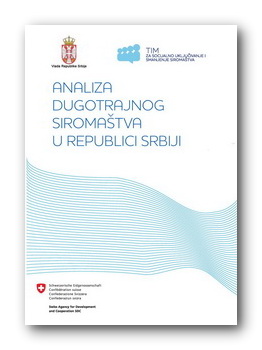 The Social Inclusion and Poverty Reduction Unit of the Government of the Republic of Serbia has published an analysis under the title “Analysis of long-term poverty in the Republic of Serbia”.
The Social Inclusion and Poverty Reduction Unit of the Government of the Republic of Serbia has published an analysis under the title “Analysis of long-term poverty in the Republic of Serbia”.
The analysis was implemented in 2019 and 2020 and includes an analysis of the data for Serbia from the Survey on Income and Living Conditions (SILC) for 2017.
Long-term poverty is a concept developed by the European Union as an important aspect of monitoring the economic situation within the SILC survey, implemented by national institutions and sent to the Statistical Office of the European Union (Eurostat). Long-term poverty involves the phenomenon where persons have available income beneath the at-risk-of-poverty threshold both during the survey year, and during the preceding two out of three years. Therefore, the main goal of the survey was to identify predictors that can be used to assess whether persons will be in long-term poverty, and to test whether the type and intensity of the impact of predictors differ when long-term poverty is defined in different ways.
The first predictor model in the analysis defined long-term poverty as defined by Eurostat – as the number of the population living beneath the poverty line (under 60% of the median average income) during the last year under study (2017) and two out of the preceding three subsequent years. The second predictor model defined long-term poverty as a dependent variable, namely as the number of persons who were at-risk-of-poverty during all four subsequent years (2014-2017), while the third model used severe material deprivation during the past four years (2014-2017).
The contents of the analysis cover:
- Defining the concept of long-term poverty;
- Analysis of dealing with the topic of long-term poverty in the Republic of Serbia;
- Negative effects of long-term poverty on various life outcomes; and
- Characteristics of families and persons living in long-term poverty.
Furthermore, the survey was also applied to a sample from Serbia, thus this analysis also contains the key conclusion and recommendations classified under three groups of measures – measures towards increasing access to the labour market and quality of jobs, measures related to raising the level of education and measures related to increasing the efficiency of social welfare.
 Government of the Republic of Serbia
Government of the Republic of Serbia















 pdf [271 KB]
pdf [271 KB]
Leave a Comment